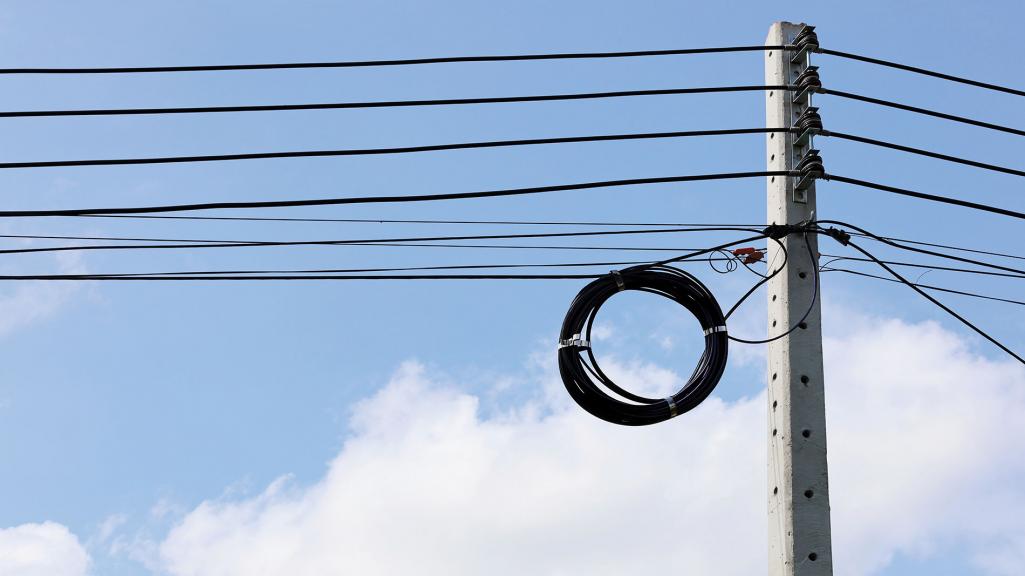Electrical utilities were among the first in the industry to adopt fiber optics, closely following the telephone companies, who were involved in developing the technology. Telcos saw fiber optics as the most cost-effective means to send information faster over longer distances at a lower cost. Utilities saw that, too, but to them, sending signals over glass solved a major problem: electrical interference from high-voltage transmission lines.

Electrical voltage always creates electromagnetic interference (EMI) that can couple into any conductive cable and may interfere with some wireless systems. Optical fiber, however, is made from glass that is all dielectric and immune to EMI. Fiber optic cable can be made completely without conductive contents, which allows installation near power conductors.
Utilities began using fiber optics almost as soon as it became available. It was used anywhere communications were needed near power equipment, such as substations or control rooms. Fiber was an obvious candidate for use on transmission lines, so it was not long before the invention of optical power ground wire (OPGW).
OPGW is made like a regular conductive wire, but in the center of the wire there is a hollow tube with some optical fibers inside. On transmission lines, the ground wire is an unshielded conductor on the top of the tower that is grounded at each one. It is used as a shield for power conductors below it. So, the ground wire is the wire that gets hit by lightning and safely conducts it to an earth ground. Yes, even lightning strikes don’t affect the optical fibers inside the OPGW.
Utilities quickly adopted OPGW for their communications needs and grid management. It’s unlikely that any new transmission lines would be built today without OPGW. Cable manufacturers now also offer power conductors with fibers inside, so if a tower is getting new power lines, it could also be an option to install more fiber.
Today, many utilities are still using OPGW that is 20 or 30 years old—old enough that they are wondering if it’s time to update or replace it. The question is how. Replacing the ground wire on transmission towers is a difficult task that may require shutting down power, which is not a good option.
Other options exist for utilities to update their communications along transmission and distribution lines. Fiber is nonconductive, and fiber optic cable is generally nonconductive. Most aerial fiber optic cables are installed by lashing to a steel messenger wire strung between poles, but there is a category of cables with special high-strength jacket designs called all-dielectric self-supporting (ADSS) cables.
ADSS cables are designed to withstand very high-tension loads, making them capable of being installed with long spans between supports, up to 1 km in some cases. They can be installed on transmission towers or utility poles below the power conductors in the telecom space with simple, easy-to-install hardware.
ADSS cable has been used in many utility applications on transmission and distribution systems. Its use is not just limited to electrical utilities; it can be used in many other aerial installations where it is more convenient or cost-effective than lashing cables to current ones or installing a new messenger wire.
Another option for installing fiber on power lines has been around almost as long as OPGW. This technique takes a small, lightweight fiber optic cable and wraps it around or lashes it to the power line. The cable is called optical power attached cable (OPAC), and it is lashed to the power cable with a specialized tool that is pulled from the ground, such as a cable lasher. Lengths of 2 km and heights of 200 m are said to be possible.
OPAC cables can be installed over energized power lines, obviously only by well-trained installers familiar with electrical and fiber optic work. Special devices are required to prevent coronal discharge near towers and at drops for splicing because the high-electric fields around high-voltage transmission lines can cause coronal discharge that may damage the cables.
With the interest in grid management, microgrids, alternative energy and, of course, all communications, electrical utilities have very high interest in fiber optics. I have been working with several groups to understand electrical utilities’ needs better, including their role in providing broadband internet services, especially in urban areas.
Rural electrical co-ops are especially well suited to provide broadband as they upgrade their communications networks for grid management. The networks they are building can often be easily expanded to include fiber optic broadband to every customer.

